#this is also a pro hat blog to be clear
Explore tagged Tumblr posts
Note
I had a brief scroll through the honourary terf posts blog and the level of reading comprehension is abysmal. Every single reblog is a pro-trans post that they have somehow misinterpreted or twisted to fit into their particular brand of terf ideology, or if they can’t do that they just explicitly ignore the pro-trans part of the message and how it is intersectional with feminism in favour of the feminist part of the message.
Their posts seem to be riddled with double-think. They say on one hand that there is no great biological difference between men and women, but that socialisation makes them utterly different from each other. Of course completely ignoring that simply because a person is socialised a particular way doesn’t mean they are forever rigidly fixed in that way – people aren’t like birds who imprint on the first thing they encounter, they are in fact capable of thinking about and changing their behaviour. They reblog posts about how people who think they are good can still be bigoted to marginalised groups without any modicum of self awareness that that is what they themselves are doing – being bigoted towards trans people.
I can’t tell if they think trans people should exist but be excluded from feminism or if they believe that transgenderism isn’t a real phenomenon. It’s genuinely difficult to tell when so many of the points they try to make are contradictory. They reblogged a post that was along the lines of “feminism is an important social movement and trans people deserve to be treated with respect are not mutually exclusive statements” (I can’t recall the exact wording) but then will have posts under which other terfs have reblogged things along the lines of “trans women have been socialised as men (Implied: and therefore must be treated as such).”
They even made a post being like “don’t bully the people I reblog otherwise they won’t realise they agree with terf ideology” but multiple posts they’ve reblogged have a disclaimer asking terfs not to interact or explaining they don’t agree with terf ideology. Imagine harassing a person (because interacting when a person has specifically asked you not to is indeed harassment and violating the clear boundary that has been set) and then being surprised when the people that follow you also start harassing the same person. They utterly failed to make the connection between why their followers have been bullying the people they’ve reblogged, much like how a commentary YouTuber in 2016 fails to realise how their videos bullying others leads to their subscribers going on witchhunts.
Their bio says “someone’s been lying to you about what terfs believe” but to be quite honest, everything is on par with what I already believed about terfs. In contrast, it very much seems to me that either someone has been lying to them about what terfs believe, or they’ve been consuming a mic of pro and anti trans posts and absorbed everything they have read without once stopping to give it critical thought as to what they’re taking in.
you put EVERYTHING i was thinking into words 👏
i honestly have nothing else to say because this said everything for me, so hats off to you
62 notes
·
View notes
Note
Hi Virginia!
"Lestat wanted claudia to die, lestat wanted louis to be hurt " I'm afraid I have seen these takes from a lot of people who did not have pro armand or pro lestat feelings, had not read the books, and were watching the show with no previous knowledge.
Sadly I understand we're they're coming from. For some reason rolin and Hannah seem to have added a vindictive streak to lestats characterization so far, making him rehearse the play, say these things at the trial and I won't even mention the whole drop mess.
They add these things and make the bare minimum to contradict them. And when they do (like with the letter or crying at the trial) its always justified with something like well lestat is just pure emotion he doesn't really think nobody knows what he will do next.
That was actually shown with armand as well. Armand is the one who is supposed to think! He plans and schemes and manipulates, whereas the show decided to make him a coward who switches sides at the drop of the hat.
It is my deepest wish that season 3 makes this right somehow and actually provide an explanation that speaks true to lestats character (he'd never wish for louis to be hurt! What happened before and after the trial when louis was getting hurt? Where was lestat??) And I'll be ecstatic if we do because yes these characters may hurt each other its book canon as well, but this mindless cruelty is not how.
I really don't mean to be negative it's a great show but I have seen this happen with many shows before where the writers at the end don't think about their own material as deeply as we do.
In any case, they should have made a few things clearer for s02 because now we have new fans of iwtv with these takes.
Thank you for your blog, hope you're doing well!!!
Hello! 💚
Here’s the thing. The show is not going to hold people’s hands. You cannot control the fact some people just cannot and will not grasp what they are being told. You can’t spoon-feed them, and Rolin isn’t interested in doing that either.
I will agree some things should’ve been more clear. I’ll also say some things should’ve been given more time to breathe (and land) instead of being crammed into the last 30 minutes of 2x08, but I haven’t seen any of this alleged Lestat hate that isn’t coming from someone who is either a) a child wrapped up in the performative “social justice warrior hidden behind a keyboard” trend or b) someone with an agenda to suit their attention-seeking narrative. The general audience (and fandom) adores Lestat and cannot wait to hear his story, and that should be abundantly clear now based on the attention and engagement the S3 teaser is receiving.
As I said, the show is not going to hold their hands. It’s their loss. *shrugs*
#interview with the vampire#iwtv#interview with the vampire amc#iwtv amc#amc interview with the vampire#amc iwtv#lestat de lioncourt
32 notes
·
View notes
Text
Meduza's The Beet: The artist, the shoes, and the death camp
Hello, and welcome back to The Beet!
I’m Eilish Hart, the editor of this weekly dispatch from Meduza that brings you long-form journalism from across Central and Eastern Europe, the Caucasus, and Central Asia. As it happens, our newsletter’s audience is just 275 subscribers shy of its next round number — and I’d love to reach that milestone before the year ends. So, please take a moment to subscribe to The Beet or, if you’re already a loyal subscriber, forward this email to a friend. Our newsletter is free, but Meduza’s reporting relies on support from readers like you, so spreading the word is a big help!
After last week’s conversation with Ukrainian Nobel Peace Prize laureate Oleksandra Matviichuk, we’re returning to our usual format with a report from Poland, courtesy of journalist James Jackson. As you may recall, James last wrote for The Beet on the eve of this fall’s Polish parliamentary election, which saw opposition parties collectively win more votes than the far-right Law and Justice Party (PiS). Having fallen far short of a parliamentary majority after eight years in power (in an election with record turnout, no less), the PiS cobbled together a doomed government that lasted all of two weeks before succumbing to a no-confidence vote on Monday. This paved the way for a new government under returning Prime Minister Donald Tusk, which had its swearing-in just yesterday.
In the brief interregnum on Tuesday, another, far gloomier event in the Polish parliament grabbed headlines: Just before the vote of confidence in Tusk’s new government, lawmaker Grzegorz Braun — the hard-right, pro-Kremlin leader of a fringe monarchist party — disrupted the proceedings by taking a fire extinguisher to the candles on a menorah lit for Hanukkah. Braun’s fellow lawmakers roundly condemned the stunt, handing him a maximum financial penalty. The parliament’s speaker, who suspended Braun from the day’s session, also promised to report him to prosecutors. In the end, the incident only served to speed things along, as lawmakers withdrew their lingering questions for Tusk and got on with the vote. Meanwhile, a rabbi relit the menorah’s candles.
All of this occurred while I was in the midst of the final edits for this week’s story, which is about none other than Grzegorz Kwiatkowski, a Polish poet and musician who has dedicated himself to raising awareness about his country’s Jewish history. Hailing from the northern port city of Gdańsk, Kwiatkowski has become known for his sharp criticism of Poland’s memory politics, particularly concerning the Holocaust and the thorny topic of Polish complicity. On his blog, Kwiatkowski said Tuesday’s incident in parliament was like a “big dark cloud” over Poland’s collective memory. And it’s precisely this type of cloud — one formed by hatred — that he’s been so actively working to sweep away. So, without further ado, over to James.

Grzegorz Kwiatkowski at the site of the former Jewish ghetto in Gdańsk
BARTOSZ BAŃKA FOR THE BEET
The artist, the shoes, and the death camp
By James Jackson
one of my forefathers must have had the gift of foresight:
I’ve only ever seen my closest in the animal light of their needs
which probably explains my isolation and loneliness
my last birthday observed in a rented bedsit
on the former Adolf Hitler Strasse in the Langhfur district
that day I took my life by turning on the gas taps
— Extract from on a hill by Grzegorz Kwiatkowski
Trudging through the soft earth of an autumnal forest, Grzegorz Kwiatkowski stops in a clearing. His trademark black jeans with gold ringmaster trim contrast against the greens and browns of the trees that rustle like the sounds of the Polish language in the wind.
Kwiatkowski is a man of many hats. He is a poet, the frontman of the post-rock band Trupa Trupa, and a critic of Poland’s memory politics.
For Kwiatkowski, this deserted spot just outside the grounds of the former Stutthof concentration camp encapsulates Poland’s complex and traumatized relationship with its past. Scattered on the forest floor and partially turned to mulch are the remains of hundreds of thousands of shoes taken from Nazi German death camps like Auschwitz.
Though Poland was a battleground for much of its history, today, the battleground is history itself. Debates about the extent of Polish collaboration in the German occupation and the Holocaust led the Law and Justice Party, which governed for the last eight years, to accuse critical historians of a “pedagogy of shame.” The courts even went so far as to prosecute scholars like Barbara Engelking and Jan Grabowski for defamation and order them to apologize for a factual inaccuracy about a long-dead mayor accused of handing over Jews to the Nazis. (The apology was later overturned on appeal.)
In 2022, the Law and Justice government demanded the equivalent of $1.3 trillion in reparations from Germany for damage done during World War II, when Poland lost 17 percent of its population — the highest proportion of any country — and saw cities like Warsaw bombed to rubble, with 85 percent of the capital destroyed.

Destruction in Gdańsk after World War II, 1945
ERICH ENGEL / ULLSTEIN BILD / GETTY IMAGES
Kwiatkowski explains that Stutthof, less than an hour’s drive from Gdańsk, was the leather repair center for all of Nazi Germany’s concentration camps in Europe. The shoes were stolen from their mostly Jewish owners — men, women, and children — and taken here to be converted into leather goods. When the Red Army liberated Stutthof in 1945, they found half a million shoes piled into mountains. These stood neglected until the 1960s, Kwiatkowski says, as Poland’s Soviet-backed communist regime suppressed much of the horror of the Holocaust from popular memory.
Established in 1962, the museum features an exhibit at the entrance with one pile of the shoes, but the rest were given a shallow burial in the forest and left to rot. “It’s the insanity of human beings,” Kwiatkowski says. He and a friend came across the decaying soles in 2015 and later told the story to the international press. After The Guardian and CBC reported on it, nothing changed. But when reporters from the German radio station Deutschlandfunk gave notice that they were coming, the museum staff reportedly panicked and had these artifacts of genocide dug up.
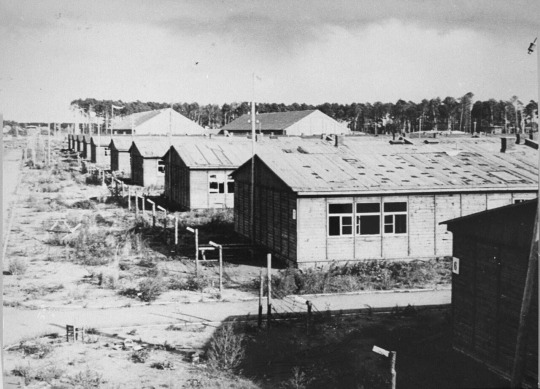
The barracks at the Stutthof camp, photographed after the liberation
FLHC 20214 / ALAMY / VIDA PRESS
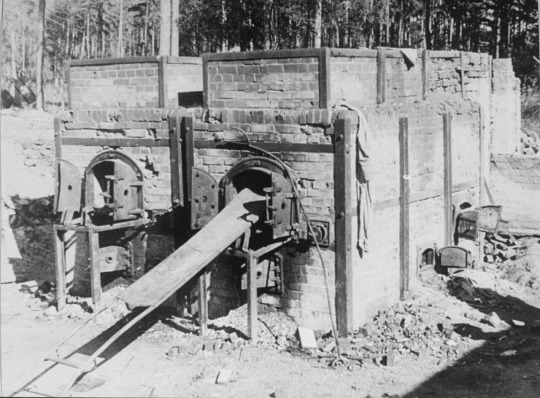
Two cremators at Stutthof, photographed after the liberation
COLLECTION OF THE UNITED STATES HOLOCAUST MEMORIAL MUSEUM
“The museum workers were frightened and ashamed because the Germans would see it — it’s so paradoxical,” Kwiatkowski tells me, frustrated at this apparent attempt to brush history under the carpet. Unlike the museum curators, he sees confronting the crimes and neglect of history as his duty. “It’s a privilege to be a curator of this bloody past,” he says. “You can make an anti-hatred message from it: No killing, respect others.”
Later, a chance encounter at a car repair shop led him to doubt the local government’s claims that these artifacts had been disposed of respectfully. Allegedly, the local garbage dump turned away a truck carrying some of the shoes, so they burned the macabre cargo in a field next to the mechanic’s workshop. “I was very nervous and started to ask questions, but I was too curious, and then he [the mechanic] didn’t want to say more,” Kwiatkowski recounts as we drive away from Stutthof. “This is the story of Polish history.”

The shoes on display at the Stutthof Museum
BRUCE ADAMS / GETTY IMAGES

The mounds of shoes Grzegorz Kwiatkowski found in the forest near the former Stutthof camp
GRZEGORZ KWIATKOWSKI’S PERSONAL ARCHIVE
Victims and perpetrators
The Stutthof camp isn’t just abstract for Kwiatkowski; it’s intimate. At age 16, his grandfather Józef was imprisoned there for the crime of secretly learning Polish, or for refusing to work as a forced laborer for the Germans, according to conflicting accounts from Kwiatkowski’s family members. Józef’s work was unimaginable, carting dead bodies from the camp hospital to the crematorium, a grim task he would later have to repeat while working as a forced laborer in Hamburg after Allied bombing raids.

One of Józef Kwiatkowski’s documents from the Stutthof camp
GRZEGORZ KWIATKOWSKI’S PERSONAL ARCHIVE
In the interim, he was forcibly conscripted into the Wehrmacht for a short stint, a common experience for men living near what was then the German city of Danzig.
Years later, when visiting the Stutthof museum with his grandson, Józef “started crying and screaming,” Kwiatkowski recalls. “He was [reliving] the trauma,” the poet explains. “He affected my life in the biggest way because he was a broken, calm person.”
Kwiatkowski’s wife’s family suffered terribly, too. Many years into the couple’s marriage, his wife’s grandmother let slip that they had spent the war hiding in the forest. Initially, Kwiatkowski was confused — the German occupation was awful, but this wasn’t normal for ethnic Poles. Eventually, his wife admitted that her family was Jewish, but she had been raised to keep this quiet. “Will it help us here? No,” Kwiatkowski recalls her saying matter-of-factly, though he adds that she’s been more open about her Jewish identity in recent years.

A banner hung on a large synagogue in Danzig (Gdańsk) that reads “Come, beloved May and make us free from the Jews.” June 1939.
AUGUST DARWELL / PICTURE POST / HULTON ARCHIVE / GETTY IMAGES
Even after World War II, anti-Jewish violence in Poland continued to claim lives. In the town of Kielce in 1946, an angry mob, together with Polish soldiers and police, killed 42 Jewish refugees after a child falsely accused them of kidnapping. The massacre triggered a mass exodus of Poland’s surviving Jews, marking the first of four emigration waves during the communist era. The final outflow came as a result of an antisemitic campaign the communist authorities initiated in 1968.
But it’s hard to talk about memory in Poland without running into contradictions, Kwiatkowski finds. “Poland has a victim complex,” he says, and the country was indeed a victim of aggression at the hands of both Nazi Germany and the Soviet Union. “It’s very complicated because Poland was devastated in a huge way, but on the other hand, [Law and Justice’s] historical narrative is that of a country that is only a victim and innocent.”

Nazi police and soldiers attack a Jewish man in Gdańsk after the German occupation of Poland in 1939
UNIVERSAL HISTORY ARCHIVE / UNIVERSAL IMAGES GROUP / GETTY IMAGES
Kwiatkowski mentions the recently beatified Ulma family as an example. Nazi German occupiers and local police summarily executed Józef Ulma, his pregnant wife Wiktoria, and their six small children in 1944, along with the eight Jews hidden in their home. “The point of the Ulma family is they were killed because [their] Polish neighbors told the Germans that they were hiding Jews,” he explains — an inconvenient fact often left out of this story of Polish Catholic heroism.
“Jewish people were shocked because the Poles were their neighbors. Many say the Poles were worse than the Germans. [Hearing this] shocked me — but they felt betrayed,” Kwiatkowski says.
At the same time, he maintains that the main perpetrators shouldn’t be forgotten. “Germany and Austria are great at whitewashing history,” Kwiatkowski maintains, referring to the praise the two countries have received for their handling of Holocaust memory. “They did it as a nation, and they should feel bad.”
Beating the system
On top of being an outspoken critic of Poland’s nationalist memory politics, Kwiatkowski and his band Trupa Trupa provided music for director Agnieszka Holland’s award-winning film Green Border, which President Andrzej Duda and other leading government figures attacked for its depiction of Polish border guards mistreating refugees. But Kwiatkowski doesn’t want to be put in a box politically and says he supports the Law and Justice-backed demands for reparations from Germany.

Granary Island, located on the Motława river in Gdańsk, is where the city’s Jewish ghetto once stood
BARTOSZ BAŃKA FOR THE BEET
“I don’t care about the left side or right side,” Kwiatkowski says, “The Polish political class is very corrupt, from left to right. In the 1990s, they were in one party,” he continues. “Polarization helps them. It’s a cynical game that benefits them.”
During the highly-charged campaign season for this fall’s parliamentary election, the brains behind the nationalist government, Law and Justice leader Jarosław Kaczyński, made increasingly wild statements, describing his arch-rival Donald Tusk of the center-right Civic Platform as the personification of “pure evil.” He even accused the opposition of harboring secret plans to ban Poles from mushroom picking.
After the Civic Platform-led coalition won the elections, however, the musician’s tune changed. “I didn’t realize it would make me so happy,” Kwiatkowski tells me, praising the fact that his country had rejected nationalism and its accompanying rewriting of history. “The atmosphere after the elections is really great,” he continues. “If the new government wants to change positively and ethically and talk about [history] openly, I can use their positive attitude and build beautiful ethical works [of art].”
Of all Poland’s politicians, Kwiatkowski remains an admirer of Gdańsk’s most famous son: former dock worker and union leader Lech Wałęsa, who led the Solidarność movement to defeat communism and became Poland’s first president elected by popular vote. In recent years, Wałęsa has been mocked for his down-to-earth manner, celebrating his 80th birthday with a cake made of breaded pork cutlet and taking baths in beer. “He’s like a clown. He’s like Don Quixote,” Kwiatkowski says. “From his perspective, he was a nobody, and then he beat the communist system in Europe. It’s amazing.”
Even though he’s a father of two and now approaching his forties, there’s something similarly boyish about Kwiatkowski’s fascination with the history of his hometown, which produced such notable figures as writer Günter Grass and the country’s new prime minister, Donald Tusk.

The Jewish cemetery in Gdańsk
BARTOSZ BAŃKA FOR THE BEET

The Red Mouse Granary building, which served as a ghetto for Gdańsk Jews
THE TIMES OF ISRAEL

The new memorial plaque on Granary Island
BARTOSZ BAŃKA FOR THE BEET
Back in Gdańsk, Kwiatkowski takes me on a tour of Jewish cemeteries that the local council demolished after the antisemitic purge in 1968; long grass has grown over what was once holy ground. A small community group now funds the maintenance of these ruins, which antisemites desecrate with tragic regularity.
As well as cheering on the change in government, Kwiatkowski is currently celebrating a rare victory in memorializing the past: Alongside local journalist Dorota Kara��, he successfully campaigned for the site of the former Red Mouse Granary — where the Nazis imprisoned local Jews before transporting them to concentration camps — to be officially commemorated. The local authorities have now installed a plaque marking the spot where “the German Nazis created a ghetto for Gdańsk Jews,” written in Hebrew, Polish, German, and English.
But for every victory, there’s a new controversy, it seems. On Tuesday, far-right lawmaker Grzegorz Braun doused a menorah in Poland’s parliament building, lit with candles for Hanukkah, with a fire extinguisher — to near-universal condemnation. Kwiatkowski called for action in response to Braun’s antisemitic attack and promptly received an invite from Gdańsk’s mayor to take part in a Hanukkah candle-lighting ceremony at city hall alongside representatives of the local Jewish community.

Grzegorz Kwiatkowski at the site of the former Jewish ghetto in Gdańsk
BARTOSZ BAŃKA FOR THE BEET
Primo Levi and Theodor Adorno disagreed about whether there could be poetry after Auschwitz. Perhaps it takes not just poets but also musicians, historians, and even quixotic jesters to preserve the memory of the Holocaust in the lands where it was committed. As Kwiatkowski wrote on social media after the ceremony at city hall, Gdańsk is a city that remembers.
4 notes
·
View notes
Text
Benefits of a Digital Marketing Agency in USA for Startups

Starting a business is tough. You’ve got the product, the ambition, maybe even some early users—but getting noticed in today’s digital space is a whole different challenge. That’s where a digital marketing agency in USA becomes not just helpful, but often necessary.
Startups need more than a flashy website or random social posts. They need strategy, consistency, and results. A trusted digital marketing agency in USA brings all that and more to the table.
Let’s break down the real benefits that a startup gains by partnering with professionals who know the landscape and how to win in it.
1. Immediate Access to Expertise
Most startups don’t have a full in-house team of SEO specialists, paid ad experts, content writers, and analytics pros. Hiring them individually takes time and money—something startups are usually short on. A digital marketing agency gives you access to all of these skills at once.
Whether it’s improving your site’s search ranking or running Google Ads that convert, the agency team has seen what works and what doesn’t. You won’t waste months experimenting with guesswork.
2. Focus Stays on Product and Growth
Founders often wear too many hats. Marketing usually ends up being another task squeezed in between meetings or late at night. That’s a recipe for weak results.
With a digital marketing agency in USA, your team can stay focused on building your product while professionals handle your brand’s presence online. Campaigns stay active, content keeps flowing, and progress happens in the background without draining your attention.
3. Results That Are Measurable
Startups need to know what’s working and what’s not—fast. A proper agency doesn’t just run campaigns; they track them. You’ll get real data showing where your traffic is coming from, what ads are converting, and how your rankings are improving.
That means better decision-making. You’re not just throwing money at ads and hoping for the best. Every move is based on numbers you can understand and act on.
4. Scalable Strategies
Your startup won’t always be small. As your brand grows, so should your marketing. The same agency that builds your early strategy can help you scale without needing a full-time team of your own.
They can manage larger ad budgets, expand your presence to new platforms, or help you shift focus as your audience grows. All without starting from scratch or retraining new hires.
5. SEO That Actually Delivers
Ranking on Google isn’t just about keywords anymore. It’s about understanding how search engines work, what your audience is looking for, and how to structure your site to meet those expectations.
An experienced digital marketing agency USA stays current with search trends, algorithm changes, and technical SEO needs. That means more traffic and, more importantly, traffic that actually converts.
6. Social Media That Builds Trust
Social media is more than followers—it’s your brand voice. For startups, building a community around your mission is key. But managing multiple platforms with the right tone and timing is hard work.
An agency knows how to craft posts that engage, answer comments that build trust, and use each platform the way it's meant to be used. They also know when to post, what’s trending, and how to adjust when something isn’t working.
7. Clear Brand Messaging
Startups often struggle to explain what they do clearly. A digital marketing agency can help refine your messaging so it connects with your target audience. Whether it’s through blog content, ad copy, or landing pages, they make sure people understand who you are and why they should care.
Consistency in how your message is delivered across channels builds confidence—and confidence builds customers.
8. Paid Ads Done Right
Running paid ads without experience can drain a startup’s limited budget fast. Agencies know how to get the most out of every dollar. They test headlines, monitor click-through rates, and pause underperforming ads before they waste money.
That level of attention and experience is tough to match when you're juggling other startup tasks. It’s about making paid media actually profitable, not just present.
9. Better Use of Your Time
As a founder or core team member, your time is one of your most valuable assets. Do you really want to spend it writing Instagram captions or setting up Google Analytics?
Letting a digital marketing agency in the United States take over those jobs doesn’t mean losing control. It means trusting experts to manage what they do best—so you can focus on what you do best.
10. Fresh Perspective
Sometimes, being so close to your product makes it hard to see the gaps. An outside agency brings a new point of view. They may see missed opportunities, unclear messaging, or untapped channels you haven’t considered.
That perspective can make all the difference in a crowded market.
Final Thoughts
A startup needs speed, focus, and smart decisions to survive. Partnering with a digital marketing agency in the USA gives you an edge by removing the guesswork from your online growth strategy.
From search engine visibility to paid ads that work, from clear messaging to consistent social engagement—a professional team can help you do it all, without spreading your own team too thin.
The early stage of a business is where strong habits are formed. Marketing should be one of them. And the right agency makes sure you're doing it right from day one.
0 notes
Text
Understanding Equalizers: How to Shape Your Sound Like a Pro
Equalizers are the heart of a system for sound creation. You wish to mix your music or produce a podcast, or you just want to have better sounds out of your home audio setup. To be honest, though, the concept of equalizers is kinda vague when you are into audio and not quite sure what all those knobs and sliders really do. That's why such a big difference for frequency levels can be made just by shifting these levels. In this blog, We will explain the basics of equalizers. We will explain how they work and show you how to use them like a pro. Knowing Equalizers whether you are just getting started or want to bring your skills to a whole new level will help open up the whole potential of your audio.

What is an Equalizer?
More practically, an equalizer allows you to manipulate the balance of different frequency components in an audio signal. Essentially, it comprises a wide range of frequencies-from low, deep bass to high, sharp treble. There's everything in between, known as mid frequencies. An equalizer allows you to boost or cut any of those frequencies so that the general sound is shaped in a manner pleasing to you.
You may have used equalizers before, even if you did not know that you were doing so. Most home audio equipment, from car stereos to home systems, have very simple forms of equalizers: the bass and treble knobs on the stereos in most cars. Professional audio equipment, like mixers or digital audio workstations (DAWs), have much more sophisticated equalizers and allow for altering sound within a huge range of frequencies.
How Does an Equalizer Work?
In simple words, an equalizer is something that takes an audio signal and branches it up into different frequency bands so you can increase or decrease the gain of each band to taste. Therefore, you can tweak the tone and character of the sound by setting the gain on some frequencies to increase while other frequencies are decreased.
There are several types of equalizers, but most likely, one encounters the following:
Graphic Equalizer: It has fixed frequency bands using sliders which are used for control of the volume of each band. Graphic equalizers are commonly used in home and car audio systems. The number of bands can range from 5 to 31 while the more bands involved will provide finer control over the sound.
Parametric Equalizer: Provides much more flexibility, allowing you to modify not only the gain of each frequency band but also the bandwidth and the range of frequencies (also called Q). These make parametric equalizers favorites among pros who need more control over their sounds.
Shelving Equalizer: A simpler type of equalizer which adjusts all frequencies above or below a given point. Shelving equalizers are widely used for the treble and bass operations.
Peaking Equalizer: This equalizer boosts or cuts a particular band of frequencies centered around a certain point. You can determine how wide or narrow this band is, which is handy in targeting problem frequencies.

Why Equalizing is So Important?
Now that you understand what an equalizer is, as well as what it does, let's talk about why an equalizer is so important. An equalizer is the sculpting tool for your sound. Every room, microphone, instrument, or speaker will have a different characteristic sound. With an equalizer, you are able to balance all of these above elements to achieve clear, professional quality.
Here are a few examples of how an equalizer may be used.
Balance different instruments: All the different instruments will take up separate spaces within a full band or mix. A kick drum will occupy low frequency space, vocals sit in midrange, and cymbals or hi-hats sit in high frequencies. The equalizer exists to carve out space for all of the elements so they do not clash with each other or muddy up the mix.
Improve clarity: Sometimes, a recording can be shrill or fuzzy. You can reduce the amount of certain frequencies to make it clear and pleasant to listen to.
Remove unwanted frequencies: If there is any hum, hiss, or feedback in your recording, then an equalizers can be used to find the unwanted frequencies so you can reduce them out or eliminate them altogether.
Add warmth or brightness: Equalizers can also be used for tone-enhancement purposes. It will add brightness or clarity into the sound: the high-end boost and warmth: the low-end boost.
Basic EqualizersTips for Beginners
Here are some quick and easy tips to help you start using equalizers effectively:
Cut Before You Boost:It's easy to be tempted to boost frequencies to make things sound louder or punchier, but often you're going to get a cleaner sound by reducing unwanted frequencies first. Take vocals with muddiness in them, for instance; quite often you find the sound is cleaner if you take some of that low-mid frequency away at around 200-500 Hz before adding highs.
Be Subtle: A little equalizer goes a long, long way. Small movements of just a few dB can make all the difference in the sense that overall sound will change from one extreme to another. Excessive use of an equalizer causes unnatural or unbalanced sound.
Understand the Frequency Spectrum:
Low Frequencies (20 Hz - 250 Hz): This is where the bass lives. This is adding some warmth and weight. Too much can make it sound boomy or muddy.
Mid Frequencies (250 Hz - 4 kHz): The midrange is where most of the clarity and presence of your sound live. Too much in the midrange sounds boxy, and too little will sound thin or distant.
High Frequencies (4 kHz - 20 kHz): What you get here is brightness, sparkle. On vocals and instruments, boosting high frequencies tends to make them out, but too much is often harsh or sibilant.
Use High-Pass and Low-Pass Filters: These filters enable the process of eliminating unwanted extreme low or high frequencies. For example, a high-pass filter would eliminate unwanted low-end rumble or mic handling noise while a low pass filter would be used to eliminate hiss or excess brightness.
Experiment with Parametric Equalizer : If you've got your equalizer skills down pretty well, experiment with parametric equalizer. Play with the Q (bandwidth) to zero in on specific areas of interest and sweep through the spectrum to identify problem spots or "sweet spots" in your sound.
Ready to Shape Your Sound Like a Pro?
Mastery of the equalizer is a lesson any audio enthusiast or professional should be aware of. It can save the quality of recordings, live shows, and even a normal listening experience by a drastic leap if you know how to balance and shape frequencies.
If you are prepared for more adept sound designing and processing, you will require excellent equalizers besides other audio equipment. Be it advanced parametric equalizer, studio monitors, or mixing consoles, browse a professional audio shop, like for that matter VIP PRO AUDIO, to be armed with the right equipment. With quality tools and techniques, you shall shape sounds like a pro in no time!
0 notes
Text
This author replied to me with restricted comments: @etz-ashashiyot
“Take a breath honey, that was a lot of buzz words for one post. Now go back and reread my post with your critical thinking hat on and quote for me where I said any of that. If you're gonna be a lawyer, you need to learn how to engage people's actual arguments with a cool head rather than emotionally reacting to what you assume they said. :)”
Oh honey. My post didn’t use any buzzwords. Simply not liking what I have to say isn’t the same as using buzzwords.
If you’ve only opened your mouth lately and not your eyes, this is Tumblr, not court. So I don’t have to be polite or engage with you unemotionally, even though you wrongfully assumed that by writing forcefully I was being emotional and therefore illogical. Rest assured, I was and am quite calm, though the audacity to demand calmness in the face of atrocities is mind boggling. But perhaps speaking to you in a demure tone is the only way you can understand me, honey.
There aren’t logical or cohesive arguments to support apartheid or genocide—I say that both as a Jew and from a foreign policy perspective. The U.S.’ unwavering commitment to Israel is an anchor around its neck, so the humanitarian crisis aside, it is wholly unacceptable to continue to support them. Frankly the only reason why this charade continues isn’t because of a legitimate concern about antisemitism—it’s not as if the GOP all of a sudden cares about Jews, especially ones in another country. Our legal system is bought off by AIPAC, which perhaps makes this grandstanding all the more pathetic.
You see, I’m not misunderstanding you. That’s the problem. When you said that the “true test” of being Pro-Palestinian is to also hold Arab countries accountable for not opening their borders—that IS you shifting accountability. That reeks of the same racist rhetoric that people have utilized that always evade accountability.
You can read your statement as either these offenses being equal or punished proportionally based upon their offense. If you don’t like that, feel free to write more clearly as I can see you had to make a post clarifying your positions. But even if what you’re referring to the later, you’re evading accountability because this is an obvious red herring.
Your “but what about this” argument is, quite simply, bullshit. And if your logic was correct, we could certainly say that since Israeli’s entire existence is basically built upon the fact that since nobody wanted to open its borders to Jews post-WW2, nobody is truly pro-Israel. Now, that’s an interesting argument to make-hell, I might even agree with it.
Your statements about Israelis who are “working their asses off” to improve things, but differently than what I’d like—their perspective does not matter to me if their perspective is rooted in apartheid and genocide. And honestly, your whinging of antisemitism doesn’t seem to come from within a legitimate concern about antisemitism—rather a blatant attempt to shut down conversation and preserve the status quo, which includes what? Apartheid and genocide. And I don’t think that’s your intention—and I believe that because, unlike you, I actually went through your blog. But you still come off that way, honey.
I’m sure there would have been a way for us to have a reasonable discussion, however a very clear first step in “solving” the problem is eliminating an apartheid state. It seems as if you’d even agree on that point. All of my reply wasn’t all directed towards you specifically, or your content, rather it was about the state of things in general.
Little tip, if you think sexism helps people engage more appropriately with your arguments, you’ve thought incorrectly. And I’ve been an attorney since 2015, so I think I’m doing ok. Honey. :)
I think the true test of whether or not you are actually Pro-Palestinian is not whether you are willing to hold Israel, Jews, and/or Zionists accountable for their human rights abuses, but if you are willing to hold the multiple Arab countries who refuse them citizenship, property ownership, keep them in displaced persons camps, and/or refuse to open their borders to them accountable proportionate to the offense as well.
I think the true test of whether or not you are actually "pro-Israel" is not if you're willing to combat the "Israel can do no right" crowd with an "Israel can do no wrong" party line, but rather if you are willing to listen to the Israelis who are working their asses off trying to make it better even if you don't love their criticisms or would do things differently.
I think the true test of whether or not you're an ally to diaspora Jews is not if you recognize and stand with us against the antisemitism of the people on the other side of the political spectrum, but if you recognize and stand with us against the antisemitism of your own side.
I think the true test of whether or not you value peace and the well-being of everyone in the Levant is not having a clear idea of how to "solve" the problem, but if you are willing to prioritize the safety, dignity, freedom, and self-determination of all the people in the region over any one particular group being "right" or "vindicated."
#lawblr#the real lawblr#from the river to the sea palestine will be free#palestine#all eyes on gaza#all eyes on rafah#tw: genocide
1K notes
·
View notes
Text
Saguaro National Park Adventures: 5 Exciting Things To Experience
Are you ready to embark on an unforgettable journey through the stunning Saguaro National Park? This national park is full of adventure for outdoor enthusiasts and nature lovers. From towering cacti, to stunning desert landscapes. In this guide, we'll explore five must-do activities that will make your visit to Saguaro National Park truly unforgettable.
Introduction
Saguaro National Park, located in southern Arizona, is home to the nation's largest cacti. The park is divided into two districts, the Rincon Mountain District to the https://desertwolftours.com/blog/things-to-do-in-saguaro-national-park/ east and the Tucson Mountain District to the west. With over 91,000 acres of protected land, Saguaro National Park offers visitors the opportunity to explore diverse desert ecosystems and witness the beauty of the iconic saguaro cactus.
Saguaro National Park Adventures: 5 Exciting Things To Experience
Hiking Trails
One of the best ways to experience the natural beauty of Saguaro National Park is by exploring its extensive network of hiking trails. From easy strolls to challenging treks, there's a trail for every skill level. Don't miss the opportunity to hike through towering saguaro forests and enjoy panoramic views of the surrounding desert landscape.
Scenic Drives
If you prefer a more leisurely way to experience the park, take a scenic drive through Saguaro National Park. The Cactus Forest Loop Drive in the Rincon Mountain District and the Bajada Loop Drive in the Tucson Mountain District offer stunning views of saguaro-filled landscapes and are perfect for capturing memorable photos.
Wildlife Viewing
Saguaro National Park is teeming with diverse wildlife, including javelinas, roadrunners, and Gila monsters. Keep your eyes peeled for these fascinating creatures as you explore the park's trails and scenic overlooks. Birdwatchers will also be delighted by the variety of bird species that call Saguaro National Park home.
Stargazing
As an International Dark Sky Park, Saguaro National Park offers prime stargazing opportunities for astronomy enthusiasts. On clear nights, you can marvel at the brilliance and length of the Milky Way. Join a ranger-led stargazing program for a guided tour of the night sky like never before.
Photography
Capture the beauty of Saguaro National Park through your lens by indulging in some photography during your visit. Whether you're an amateur photographer or a seasoned pro, you'll find plenty of opportunities to snap stunning shots of cacti, desert landscapes, and wildlife against a backdrop of clear blue skies.
FAQs What are some safety tips for hiking in Saguaro National Park?
To ensure a safe hiking experience in Saguaro National Park, be sure to carry an adequate supply of water, wear sturdy hiking shoes, and protect yourself from sun exposure by wearing sunscreen and a hat. Always stay on designated trails and be aware of wildlife encounters.
Can I camp in Saguaro National Park?
Yes, both districts of Saguaro National Park offer camping facilities for visitors who wish to spend a night under the stars. Be sure to make reservations in advance as camping spots can fill up quickly during peak seasons.
Are there guided tours available in Saguaro National Park?
Yes, visitors can opt for guided to
1 note
·
View note
Text
Saguaro National Park Adventures: 5 Exciting Things To Experience
Are you ready to embark on an unforgettable journey through the stunning Saguaro National Park? From towering cacti to breathtaking desert landscapes, this national park offers a variety of exciting adventures for nature lovers and outdoor enthusiasts alike. In this guide, we'll explore five must-do activities that will make your visit to Saguaro National Park truly unforgettable.
Introduction
Saguaro National Park, located in southern Arizona, is home to the nation's largest cacti. The park is divided into two districts, the Rincon Mountain District to the east and the Tucson Mountain District to the west. With over 91,000 acres of protected land, Saguaro National Park offers visitors the opportunity to explore diverse desert ecosystems and witness the beauty of the iconic saguaro cactus.
Saguaro National Park Adventures: 5 Exciting Things To Experience
Hiking Trails
One of the best ways to experience the natural beauty of Saguaro National Park is by exploring its extensive network of hiking trails. There are trails for all skill levels, from easy strolls to challenging hikes. Don't miss the opportunity to hike through towering saguaro forests and enjoy panoramic views of the surrounding desert landscape.
Scenic Drives
If you prefer a more leisurely way to experience the park, take a scenic drive through Saguaro National Park. The Cactus Forest Loop Drive in the Rincon Mountain District and the Bajada Loop Drive in the Tucson Mountain District offer stunning views of saguaro-filled landscapes and are perfect for capturing memorable photos.
Wildlife Viewing
Saguaro National Park is teeming with diverse wildlife, including javelinas, roadrunners, and Gila monsters. Keep your eyes peeled for these fascinating creatures as you explore the park's trails and scenic overlooks. Birdwatchers will also be delighted by the variety of bird species that call Saguaro National Park home.
Stargazing
As an International Dark Sky Park, Saguaro National Park offers prime stargazing opportunities for astronomy enthusiasts. On clear nights, you can marvel at the brilliance and length of the Milky Way. Join a ranger-led stargazing program for a guided tour of the night sky like never before.
Photography
Capture the beauty of Saguaro National Park through your lens by indulging in some photography during your visit. Whether you're an amateur photographer or a seasoned pro, you'll find plenty of opportunities to snap stunning shots of cacti, desert landscapes, and wildlife against a backdrop of clear blue skies.
FAQs What are some safety tips for hiking in Saguaro National Park?
To ensure a safe hiking experience in Saguaro National Park, be sure to carry an adequate supply of water, wear sturdy hiking shoes, and https://desertwolftours.com/blog/things-to-do-in-saguaro-national-park/ protect yourself from sun exposure by wearing sunscreen and a hat. Always stay on designated trails and be aware of wildlife encounters.
Can I camp in Saguaro National Park?
Yes, both districts of Saguaro National Park offer camping facilities for visitors who wish to spend a night under the stars. Be sure to make reservations in advance as camping spots can fill up quickly during peak seasons.
Are there guided tours available in Saguaro National Park?
Yes, vi
1 note
·
View note
Text
In-the-ear Hearing Aids: Pros and Cons
For people experiencing hearing loss, there are numerous options available in the market. While all hearing aids are designed to assist in hearing better, in-the-ear hearing aids can be very beneficial. Not only they provide a comfortable fit with a discreet look, but they also offer advantages you won’t find with other styles. Read this blog to find more about these hearing aids and what their pros and cons are.
There are three most common types of hearing aids:
Behind-the-ear (BTE) hearing aid
Receiver-in-the-canal (RIC) hearing aid
In-the-ear (ITE) hearing aid
Both BTE and RICs rest behind the ear. Sound travels to the ear canal either through a thin and clear tubing or through the receiver wire. On the other hand, ITEs fit completely in the bowl of the ear or the ear canal without the use of any wires, tubing or anything that rests behind the ear.
What are In-the-ear Hearing Aids?
Most in-the-ear hearing aids can be used for mild to moderate hearing loss. Generally speaking, the smaller the device is, the less powerful it is. They sit in the outer ear bowl, allowing them to be smaller than behind-the-ear styles. When you select them, your audiologist needs to scan the inside of your ear or take an impression for a personalized fit.
In-the-ear hearing aids provide a level of sound unmatched elsewhere. That is why the have become number one choice for people wearing hearing aids for the first time.
Main Features of In- The-Ear Hearing Aids
There are many different types and models of hearing aids that can be recommended by your audiologist once you go for an assessment. Your nature of hearing loss and the severity of it will be determined. In ear hearing aids come with an array of features and add-ons. Although small in size, they can handle advanced features.
Custom- Made Fit
They are often tailored to the exact shape of the ear. They tend to be more comfortable in case you have an uncommon ear size or shape. They can be made to match your skin tone as well. In this way, the flesh colors blend in a better way so they won’t be noticeable.
Simple Controls
Since their design is small, this means they will have simple controls. They are usually chosen for program control or volume. Some of them have Bluetooth compatibility for changing programs or volume. Many of the smaller IIC and CIC ones don’t have Bluetooth due to their small size.
Tiny Batteries
Such hearing aids accommodate very small batteries, which allow the device to be small enough to fit deep in the ear canal. Size 13 hearing aid batteries are most commonly found in (BTE) and (ITE) hearing aids.
Feedback Cancellation
Most of the latest in-the-ear hearing aids have tiny computer chips that minimize feedback. Wearing a hat or hugging a loved one will not be annoying anymore.
Noise Reduction
In ear hearing aids feature noise reduction. This feature identifies and filters background noise. You can better hear people talking, giving you a better listening comfort and less listening effort.
In-The-Ear Hearing Aids: Pros and Cons
There are many advantages and drawbacks to using in-the-ear hearing aids over other styles.
Advantages
What are the pros of having in-the-ear hearing aids? Well firstly they are virtually invisible!
They are typically custom fitted and made in skin-tone shades, making them discreet.
They are very easy to insert and remove during the day. They are considered lightweight since they don’t press down on the ear.
They are less prone to feedback or whistling sounds because of their location of the microphone and speaker.
They can be large enough for additional features, such as directional microphones, Bluetooth connectivity and feedback reduction. This helps to get enough volume when spending time in noisy environments.
Disadvantages
There are some disadvantages to consider when choosing which hearing aids are right for you.
Some people might find it uncomfortable to have their haring aids inserted into their ear canal.
In-the-ear hearing aids are not suitable for those experiencing severe hearing loss.
It recommends constant and daily basis cleaning or else, you increase the risk of getting an infection or earwax impaction. Because of their small size, they are more prone to moisture and earwax buildup.
They are typically available in hearing clinics.
They involve more maintenance and repairs than some of their counterparts.
With so many types of hearing aids around, it can be very daunting to decide which one is best for you. It’s essential to weigh the pros and cons of each and most importantly seek guidance from an audiologist in order to evaluate all of your options. If you need any assistance or guidance, you can contact us. Your local Widex team is always ready to handle your inquiry.

0 notes
Text
Mastering Sound Separation in Music Production: A Comprehensive Guide
Introduction: In the dynamic world of music production, achieving crystal-clear sound separation is an art that can elevate your tracks to the next level. Drawing inspiration from artists like Paul and Bryson, where each element is distinct yet harmoniously blended, we'll explore techniques and methods to ensure your music fills the spectrum seamlessly. This blog post delves into the importance of sound selection, frequency spectrum awareness, mixing strategies, and the role of automation in creating a professional and polished sound.
youtube
1. Sound Selection: The Foundation of Clarity The drum break, comprising the kick, snare, and hi-hat, serves as the backbone of many tracks. These three key elements fill different frequency ranges – the kick in the lower spectrum, snare in the mid, and hi-hat across the top. Examining examples, we learn how intentional sound selection creates space and prevents elements from clashing. The blog emphasizes the significance of choosing sounds with non-overlapping fundamental frequencies for a seamless sonic experience.
2. The Frequency Spectrum: Unveiling the Gaps Exploring the frequency spectrum, we identify gaps that are crucial for maintaining clarity. Through practical examples, we observe how high hats, effects, vocals, and bass can coexist without interference. The discussion underlines the importance of managing frequencies to avoid conflicts, ensuring a balanced and well-separated mix.
3. Dynamics in Mixing: Balancing Act Addressing the dynamics of mixing, the blog explains the role of EQ, multiband compression, dynamic EQ, and side-chain compression in achieving separation. Key concepts and examples demonstrate how these tools enhance clarity by sculpting frequencies, allowing each element to shine in its designated space.
4. Automation: Tailoring Relationships Automation emerges as a pivotal tool when elements in a track have varied relationships. The blog explores scenarios where automation can be applied to control frequency spectrums, emphasizing its role in adapting to different sections of a composition. Examples illustrate how automation maintains separation and enhances focus during intricate musical moments.
5. Side-Chain Compression: Traditional vs. Intricate Delving into side-chain compression, the post contrasts traditional and intricate approaches. Using a stock Logic compressor and an advanced Pro MB plugin, the blog demonstrates how side-chain compression can be tailored to specific frequencies, adding rhythm and movement while preserving clarity.
Conclusion: Achieving Sonic Brilliance In summary, achieving sound separation in music production requires a holistic approach. Starting with sound selection, continuing through frequency spectrum management, and utilizing mixing techniques, the foundation for separation is laid. Automation and side-chain compression add finesse, ensuring that your final mix is not just clear but also dynamically engaging. By implementing these techniques, you can elevate your music production to deliver a professional, polished, and sonically brilliant result.
Bonus: Exclusive Offer from Our Sponsor Unlock a special discount on your first year of unlimited distribution with DistroKid.
Explore Further: If you're passionate about music production, don't miss our next video where we create a track from scratch. You can even download the template to kickstart your own musical journey. We look forward to seeing you in the next one. Take care and happy producing!
Want to learn more about music production? Access Warrior sound Courses here
0 notes
Text
Researching and Comparing Construction Contractors Near You Just Got Easier
When you hear the word construction, what’s the first thing that comes to mind? For most, it’s a vision of a dusty, chaotic construction site with cranes towering overhead and workers scurrying around like ants. However, behind all of that madness are the skilled contractors who make it all happen. If you're looking for a construction contractor for your home improvement project or next big commercial project, it’s important to take your time and do your research to find the best match for your needs. In this blog post, we're going to give you the lowdown on how to research and compare construction contractors near you like the next level pro. So put on your hard hat, let's get started with some sweet tips, tricks, and industry secrets.
The Importance of Researching and Comparing Construction Contractors Near You
There might be a million contractors in your area, but finding the right fit for your project is crucial. Checking out reviews and ratings online as well as asking friends and family for recommendations are great places to start. However, conducting thorough research and comparing potential contractors before making a final decision can save you a lot of hassle, time, and most importantly, money.
You don’t want to end up with a contractor who doesn’t have the necessary skill set, is subpar in communication, or worse yet, disappears with your payment. By doing your homework and comparing various contractors, you can ensure that you get the best value for your hard-earned cash and that your construction project experience is a positive one.
How to Research and Compare Construction Contractors Near You
Verify Contractor Credentials and Licenses
The first step is to check the validity of the contractor's license, registration, and insurance. Every state has its own regulations and requirements for construction contractors, so make sure to do your research upfront. You can usually find this information online. Check that your potential contractor has a valid license, the right insurance coverage, and is registered with all necessary professional bodies.
Check Out Reviews and Ratings Online
Online reviews and ratings can save you a lot of time in the initial stages of research. Check out platforms like Yelp, Google Business, and Facebook to see what past clients have to say about the contractor. Look at overall rating trends and pay attention to how the contractors have responded to negative reviews. It’s important to read through multiple reviews and not simply look at the ratings. Investigate the reviewer's experience and decide for yourself if their complaints are valid.
Look into Professional Expertise and Experience
Check out the contractor's portfolio of past projects. The more projects they have completed in your area, the better. Look out for projects similar to what you have in mind. Ensure that the contractor has the necessary expertise and experience to execute your plan. Nothing beats seeing a finished product, so don't be shy in reaching out and asking for references. Chat to past clients about their experience and any pain points they encountered.
Compare and Negotiate Quotes
Once you have a shortlist of potential contractors, it's time to request a quote. Don't jump at the first quote that comes your way. Get a few competitive quotes and compare them. Ensure that all quotes are in writing, and that they are detailed as to what is included and excluded. Be sure to ask for clarification if anything is not clear, don't be shy to negotiate on cost. But, remember not to compromise on quality.
Look Out For Red Flags
If a contractor requests payment in full, upfront, that should raise an alarm. Furthermore, it’s important to know the payment schedule that a contractor uses. Are payments only due after key milestones or over time? If a contractor is hesitant to provide their references, that should also raise an alarm. Make sure to ask for a clear contract that outlines all terms and conditions before signing on the dotted line.
Key Takeaways
Research and compare different contractors to ensure the best fit for your project. Verify contractor licenses, registrations, and insurance. Check out online reviews and ratings as well as the contractor's past projects and professional expertise. Be sure to get a few quotes, compare them, and negotiate cost without compromising on quality. If red flags pop up, walk away.
Anyway, now you have the inside scoop on researching and comparing construction contractors near you. Remember to make use of online platforms to check out reviews, ratings, portfolios, and conduct thorough research before making a final decision. Don't be afraid to request multiple quotes, negotiate on cost, and look out for any red flags. At the end of the day, finding the right contractor can make or break your construction project experience. Happy hunting fellas, and may the construction gods be in your favour.
Want to know more? Visit our website: https://utilitiesone.com/
0 notes
Text
SaNa is enhanced by Toei? Filler vs manga and a shipping narrative + SaNa in new arcs and Nami's feelings
Sorry for the long title, but I decided to answer two asks in one post since they are in the same ask... And I also wanted the topics to be clear. Anyways, let's get to it because this will be a rather long one. :)
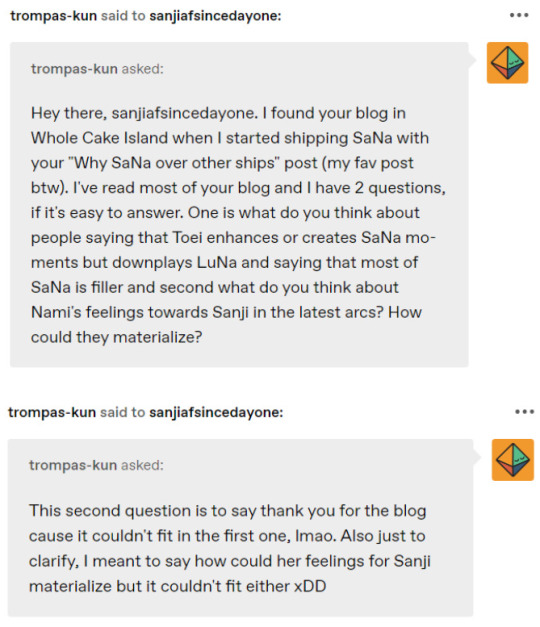
Hi @trompas-kun :) Thank you so much for liking my blog and my "Why SaNa over other ships" post. I apologize for it taking me so long to answer, but I kind of wrote more than I planned, and then I got sick for 3 weeks. I’m so sorry. T-T I hope it will be worth the wait.
I also want to say thank you for your questions! I find them very interesting, though I first hesitated to answer the first one due to the SaNa vs Lu/Na nature of it. But considering I still get random hate from Lu/Na shippers despite being fairly civil I suppose it doesn’t matter what I do. Besides, this is my view on the whole thing and I think it’s important to maybe add a counter to it since this concept of Toei being pro or anti various ships seem to have spread more and more the last couple of years, basically all of it coming from the Lu/Na shippers. Sadly the Sa/Na fandom doesn’t have as strong a voice as the Lu/Na one so this might go unnoticed to most, but I hope this view of Toei having their own secret agendas can die down at least a little as time passes.
Regarding Toei adding or changing things, they do it all the time to all kinds of moments. I personally think that the “Toei enhances Sana but downplays Lu/Na” is an exaggerated discourse that has spread because the Lu/Na shippers read the same analysis and spread some examples and trust it blindly instead of actually watching the anime and reading the manga with unbiased eyes. Not to mention when you have a bias you tend to notice “negative things” or things that go against your belief more. So because of this negativity bias and it being spread and talked about it has become “accepted” in the Lu/Na fandom that SaNa being pushed by Toei (at the expense of Lu/Na) is how it is. And because the Lu/Na fandom is loud and big it spreads even outside of their echo chamber to some degree, but from what I have seen this is mostly something that Lu/Na shippers claim and talk about and not the general fandom. So to begin with I wouldn’t say it’s “people saying” this, but rather fans that are Lu/Na shippers or anti Sa/Na.
I think it’s very convenient how the Lu/Na shippers ignore when the Toei makes things that highlight Nami and Luffy’s bond but say they favor Sa/Na when the truth is that Toei adds a lot in all kinds of moments, to fill out and make the anime longer than the manga. We for example have the whole Nebulandia thing which they praised to no end when it came out.

Not to mention in the WCI arc (around when this whole discorse started to spread) where they added a full moment of Nami going to Luffy and crying first after his fight with Sanji, though in the manga she goes directly to Sanji and has no interaction with Luffy until he wakes up again.

But I suppose Toei’s added moments are only “good” when it benefits them. For example how they love Nami wearing Luffy’s hat in Skypiea despite it being filler. She carries it in the manga, but she doesn’t wear it. It’s a small change, but one could call it “pandering” since Lu/Na shippers love to bring up Nami wearing his hat.

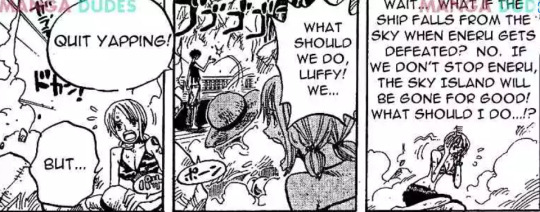
I could say in the same arc Sa/Na is “downplayed” by Toei making Sanji give flowers to both Nami and Robin when he only is shown wanting to give one to Nami in the manga. Of course over such a long show you can find various examples both for or against most ships being favored or “downplayed”. I do think these small changes can in some cases change an anime only watcher’s view, but most of the time it’s not really any huge changes that are being made.
They also forget that many of the “negative” Sa/Na moments are enhanced in the anime for gag purposes, something that makes many see Sa/Na in a worse way than they are portrayed in the manga. (Actually gags in general seems to get kind of overused in the anime.) For example showing Nami having to physically stop Sanji at times.



Sometimes Toei adds things that, though small, might change how the watchers view the characters but in no way do I think they are doing this to push one particular ship over another. I think this view that Toei pushes SaNa has more to do with recency bias and negativity bias in the shippers that don't like SaNa. They focus on only what they consider bad for their own ship, especially after having this theory being presented to them, and make it into a bigger thing that it likely is. Then they more easily remember these examples rather than things that in contrast might be “bad” for Sa/Na as a ship.
I’ve spoken about Sa/Na and fillers before in Hidden SaNami - Manga and filler, and I am not going to lie and say we don’t get really good fillers at times. But I am also of the belief that what Toei does is add things mostly based on what they think fits. And it just so happens that Sanji is very much specifically attached to Nami and their dynamic works well both for gags and in some cases even “romantic looking scenarios” when there is real drama going on. The writers at Toei see that and so they fill out scenes that already exist or create new ones that are in their opinion in character for the strawhats. For example, they know Sanji is a heart-eyed pervert, and so they added more moments for him with the mermaids in Fishman Island as an example. During WCI he had a romance focused storyline and thus they also added moments between Sanji and Purin that were not in the manga.

Sanji saving her from falling and San/Pu holding hands is one example of something that never happened, which to me clearly shows it’s more about adding what they think they can in regards to the characters and the current story, rather than having some secret agenda for certain ships.
Another San/Pu example is this tiny panel where Sanji is carrying her being zoomed in and changed to a bridial carry. It happens to many ships and moments so the "Toei loves SaNa" simply isn't true in my opinion.

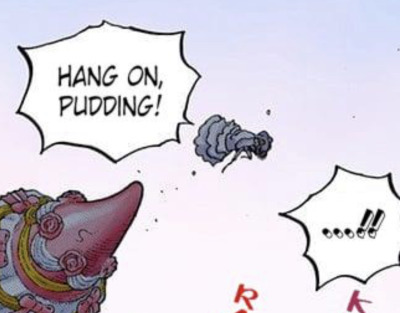
Pandering to ships happens in most anime, and even Sanji x Zoro has gotten some rather obviously shippy moments. But the Lu/Na shippers don’t focus on or care about these other things, because Sa/Na (and to some extent Lu/Han) is their main target.
What I think Lu/Na fans might have a hard time accepting is that Luffy and Nami don't have a relationship where you can add shippy types of moments as easily. Not that it hasn’t happened, just look at the Nebulandia special again. But Luffy in particular is simply ill-fitted for shippy moments. For Hancock they added a “shippy scene” with Luffy but that was of course a dream and a gag, because it would be weird to see Luffy act like that towards anyone. The whole joke is that it’s out of character for Luffy.

Toei saw a chance to be funny and took it. Similarly we have seen Sanji “dream” of having a child with Nami in filler, which is also more in line with Sanji but would be really weird to see coming from Nami.
From what I recall this whole idea of Toei being pro Sa/Na was born in the Lu/Na fandom after the Zou scene with Nami running after Sanji. Then they just looked for older moments to add to their already decided hypothesis that Toei is biased (while still being happy about whatever added Lu/Na moment Toei has made and saying things like “they got it right this time”).

Granted that scene between SaNa in Zou is very dramatic and even slightly romantic looking, but Nami during all of Zou was very much highlighted as the most worried about Sanji in the manga. Thus Toei likely took the chance to add this scene. Likewise Nami was hurt by Sanji in WCI and thus they added the corridor walk scene (which I’ve seen anti Sa/Na people use as an example of Nami hating Sanji by the way). It’s extra drama added based on similar previous moments and the feelings they expressed in the manga.

There is actually a particular post from a Lu/Na shipper that I suspect made this viewpoint more widespread through their community, and in that post they even use Sa/Na examples that aren’t correct. For example, they claim that Nami’s reaction in the moment in Skypiea when Sanji saves Nami and Usopp is exaggerated in the anime. (And that Toei stole/copied the moment from a Lu/Na scene). Let me just show you a piece of that post here.



But, it isn’t really the way this post describes it. They excluded some manga panels in their “analysis” post, making the change seem more dramatic than it was.

Maybe they read this very incorrect old translation and trusted it? (Personally I don’t understand how this translation could happen to begin with.)

I don’t know, but Nami is saying exactly the same thing she did in the anime, asking why Usopp is accelerating and mentioning Sanji before Usopp interrupt her. The scene is longer than the small panel, but that is literally the purpose of making an anime based of a manga. But the dialogue is the same in the manga and the anime, and thus the whole point of the anime changing this "move or be toasted" moment to be more pro SaNa is simply false.
I remember seeing this post when it was new, and admittedly I have not checked all comparisons and I am sure some are legit changes/filler additions, but the Skypiea moment in particular made me annoyed because I know they described it incorrectly and it’s a moment from the manga that I really like, where Nami is showing a lot of concern for Sanji. I won’t share the link or full original post, because I don’t want people to go there and comment and make a fuss, but I also wanted to mention it as I do think it has affected the Lu/Na shippers view a lot.
More than anything though I think that Lu/Na shippers forget how many Sanji x Nami moments Oda himself has written in the manga. Then they use the fillers as an excuse or even anti-SaNa propaganda to lift their own ship and downplay SaNa. This is the perhaps radical opinion I have about it at least, because honestly when going through a manga that is 1000+ chapters and adding filler moments to that you can probably find a lot of inconsistencies that align with whatever agenda you try to push. You just have to use the right angle and ignore examples that might go against your point. (Which the Lu/Na fandom clearly has done) "It's Toei's fault SaNa looks like a good ship to some" is such a weird rhetoric to have considering how many great SaNa moments there are in the manga.


For me Sa/Na in the manga is a good ship that has had a lot of great moments. I feel like Lu/Na shippers tend to ignore or downplay how much Oda has given Sanji and Nami time to have their own relationship development and that Sa/Na is far from a shallow gag ship that’s promoted by Toei as some of them try to claim. Luffy himself said in WCI to Sanji that “Nami and the others worried about you more than anyone” and Nami and Sanji had their own storylines with serious interactions in many arcs despite Sanji not being the main hero.

In the end, maybe Toei’s image of the manga and the characters simply doesn’t fit with what the Lu/Na shippers want it to be? Maybe they have read too much into things that don't really suggest what they want it to? And then consequently get angry when other pairs get more shippy moments than their own.
Also, in general I find the filler excuse kind of funny, because they imply that Oda has no influence over the anime whatsoever and that Toei animation are the bad guys going against his will on purpose. Yet Toei also makes the movies, and some of those are extremely well-received, praised and used as “proof” amongst the Lu/Na fandom. So the movies are just this big exception when Toei does what Oda actually wants, while when it comes to the canon story being adapted they totally ignore Oda’s wishes and story? I very much doubt it. It’s simply Lu/Na shippers needing a villain for why things don’t look the way they want in the added anime moments, which are supposed to be extended filler based on the manga material and characters’ personalities. Of course they might not get it all right when making the anime, but I very much doubt they are adding things for some targeted reason towards shippers. (Though, again, pandering does exist to some extent where it might work in line with the characters).
In my opinion there are fillers added that are both positive and negative in regards to most fans’ views of the characters. But they are there to fill gaps, and to prolong the anime. Some are extensions of scenes Oda wrote, others are complete AU’s like the Edo Historical Special fillers. But it’s still going to be based on how the writers, producers and directors have interpreted the characters in the manga. Often that will mean things like more exaggerated gags or rehashed stories with new filler characters or the existing scenes getting more “flare”.
Of course at times the anime does very stupid additions that doesn’t always make sense, but even so the manga is still their source material. Though of course they only know what already is and not what Oda is planning to write. Hence we can sometimes see things lean more into what is going on in the current arc sometimes. Like in the 3rd movie when Sanji says he wants to be a prince, likely because of his Mr. Prince portrayal in Alabasta happening close to the movie being made, despite this clearly going against canon now years later when we know he is a prince and doesn’t like his heritage at all.
If Lu/Na shippers say Toei adds more shippy moments for SaNa than Lu/Na then it’s likely because Toei thinks it’s more in line with Sanji and Nami as characters compared to with Luffy. In the end though, filler is filler, and what Oda writes is what truly matters.
Personally I think the portrayal of Sanji and Nami is better in the manga compared to the anime (as most things) and never has filler been a reason for me personally to ship them or think they could become canon. It’s simply added moments, sometimes they are nice and other times not so nice. I know many other SaNa shippers are the same. I wanted to say this because too many times I see anti SaNa fans say those that ship them together must not read the manga. Trust me, we do.
But who knows, maybe I am the salty and biased one and Toei is actually pro Sa/Na against the will of Oda.
As for your second question I touched on it veeeery briefly in THIS POST speaking a little about SaNa in Wano. But I must admit this question is a lot more difficult to me than the first one. Especially since you ask about Nami’s feelings manifesting in particular and also asking for a prediction.
Honestly I don’t think we have gotten anything major from Nami herself except her worry and involvement in Sanji’s story during Zou and WCI. We got a few moments in Wano as well, like Sanji carrying her again, protecting her and of course the “Take care of my Nami-san” line. For me it’s the possible changes in Oda’s writing of Sanji and Nami and some of Sanji’s interactions and reactions to Nami that makes me think feelings from Nami’s side might be slowly developed and could appear in some form further ahead.
I know you said “recent arcs” but I hope you will allow me to go back a bit to other arcs as well to explain what I mean.
In my opinion I don’t think it’s impossible that Oda has escalated Sanji and Nami’s interactions and highlighted their interest and worry of each other for a long time now. Of course it’s always been there, even back in Arlong Park, Drum Island, Skypiea and of course Enies Lobby and Thriller Bark. Often Oda has paired the two together or at least made one chase or help the other. As Oda once put it, after he draws Nami it’s simply natural that Sanji follows (Watch video at 46.40). And this might be partly a joke, but we also know it’s true and we have many good interactions between them in most arcs.

What I think is that during Fishman Island, Punk Hazard and Dressarosa Oda started the more obvious set up with Sanji for Whole Cake Island and what was to come with his family and backstory. What Oda did before WCI with Sanji was to set up and remind the readers of four things in particular; his kindness, his doubt in his value to the crew as more than a chef (as part of his sacrificial nature), his chivalry and lastly even his character's “chance” for romance. I think Oda brought back these things to remind us clearly who Sanji is and what he is about before his fate during Zou and WCI was revealed. The fact that Oda has used Sanji in two romantic plots with first Viola and then Purin and with both of them ending up liking him despite their initial goal and them turning to the aid of the strawhats because of him says a lot on its own.
So why does this matter for the development of SaNa? Well, first of all Sanji was clearly seen leaving both these women behind for Nami in particular. We even saw Purin’s reaction to SaNa specifically. Of course one could say it’s simply to foreshadow Purin liking Sanji and it being read as jealousy, but in the end it’s still Oda drawing Sanji with Nami happily in his arms after everything they have been through.
I’ve said it before but I don’t think Oda keeps making moments like this at random. Nami has been there in several pivotal moments for Sanji, and she and Sanji have in many instances been placed together to add to the other’s story or highlight the other’s character traits. For many of the plot set-ups with Sanji prior to WCI Nami was there to explain or show it to us readers.
For example saying Yonji is nothing like Sanji or through her doubting the Sanji clone is really him due to him not helping them.

Other characters also mention often how kind Sanji is and honestly I think people need to remember that this is a trait Oda sees in Sanji and keeps mentioning. I say this because in the WCI arc in particular Oda portrays Sanji as a good potential love interest and a very good person in general. A lot of anti-SaNa fans seem to think Nami sees no positive traits in Sanji, despite Oda writing Nami saying good things as direct opinions from her that she has about Sanji. Clearly she sees a lot of good in him despite his flaws and Oda had her point it out clearly.
We also know Sanji has risked or straight out sacrificed himself for Nami many times, but she has most times not seen it or even known about it. Of course she cares about her nakama and Nami has been used in this way before (and with other crewmembers as well), but even so I think Oda’s focus on Nami in particular is there to clearly show us her image of him before everything unfolds in the Zou and WCI arcs after. He is someone she can trust and depend on, a savior and protector, and she doesn’t want to see him get hurt.

We even got Nami coming out of hiding in Zou because she was worried. Not to mention she willingly goes to a Yonkou territory for Sanji’s sake, and actually she is insisting on following despite being told no at first. She also defends Sanji against Zoro and gets offened on his behalf and is in general the main driving force behind going to save Sanji.


Another rather subtle change from Oda (though noticable amongst SaNa shippers for sure) is the increased amount in touching between Sanji and Nami. Something that has been seen through several cases in WCI, and that continued on to Wano as well though most of it was Sanji carrying many people at the same time.

I also think WCI could have been a turning point for Nami’s feelings even though she isn’t showing it openly yet. Maybe she will keep being tsundere about it until the end, or maybe she isn’t really aware of her own feelings herself yet. I could also be reading things wrong. But I don’t think we should underestimate Oda adding one sign of Sanji seeing mutual affection, one joke about a proposal and a possessive claim of Nami being “his”. Because Oda likely won’t write something like this for no reason, and though two of them are hidden behind gags, it’s a change compared to earlier moments that are similar.


I am actually writing a small theory on this and how Sanji might sense Nami’s feelings slowly changing for him through his observation haki. I would love to talk about it more because I think this could be Oda’s way of changing things very slowly without making it obvious, but I kinda think it needs a post of its own.
I think that either Oda will keep adding these small types of moments but not really commit to making anything official until the very end, or if we are lucky, he will write more to build on the conflict in WCI and what Nami knows about Sanji to add some bigger moments between them. But I doubt any of it will be any type of confirmed relationship as I don’t think Oda will want to change the strawhat dynamics until the series is ending.
(Though Purin coming back is also likely happening and I think that is definitely going to show us if Oda has intentions for San/Pu to develop to something more or not.)
Anyways, to sum it up I think Oda’s way of writing SaNa and adding more touch and things like that between them is a sign for SaNa to possibly happen further ahead. But I think Nami is still either tsundere or maybe even unaware of her feelings, and Sanji is sensing them but letting things stay the way they are. I think Oda might be stalling so he doesn't have to write actual romance or change their interactions too much. Does that make sense? So Nami’s feelings are right now mostly manifesting through Sanji sensing them change slowly, basically. Hence comments like “My Nami-san” only happening in Wano despite Sanji being the way he is since the very beginning. At the very least Oda has definitely given SaNa a lot of great looking moments in the New World and I hope he will keep it up.
I could probably go into more details or examples, but I hope I kind of answered your question at least. I know I wrote a lot more about the first topic, but like I said that was a lot easier and more straightforward.
I hope this was all an interesting read for you. Either way I want to say thanks for asking it though, because I had a lot of fun writing this.
#sanji#nami#one piece#sanami#sannami#sannami analysis#sanji x nami#one piece manga#one piece anime#one piece shipping#one piece filler#toei pro shipping#anime vs manga#one piece anime vs manga#toei filler
178 notes
·
View notes
Text
So here’s the thing about TERFs
They’re about as much of a monolith as the trans community.
Meaning that they have a ton of little sects that disagree with each other and cannibalize each other and can fight each other just as strongly as they fight trans people.
This means not every individual TERF is going to believe the same thing as another. In fact many of them will not agree with what we consider General TERF Rhetoric.
The problem is that they, like the trans community, have one strong agenda.
Their agenda is to destroy trans people specifically because they think trans people are upholding the patriarchal standards on womanhood. And see, TERFs are radfems; they seriously think the world would be a better place if it was woman, not man on top.
And as much as I just said that not every TERF agrees with each other, radfem has its roots in excising womanhood from manhood entirely. It’s separatism plain and simple.
I made this post a few weeks ago. It’s now the biggest post on my blog and brought a lot of my followers here, I’m sure. Here’s the thing.
I made that post to talk about issues that trans masculine people have with TERFs specifically because I was getting tired of the argument “trans men who use the word transandrophobia only talk about trans women.”
TERFs of course found this and have taken particular issue with “if you’re white, they want you to produce more white babies.” Because, you see, TERFs think they care first and foremost about women’s bodily autonomy. They tend to be pro-choice, and a lot of them are loudly proud of not wanting children themselves. There’s a lot of nonwhite TERFs too, so of course they’re extra confused by this statement.
The thing is -- TERFs have locked arms with conservative politicians. In the US, especially since Trump but pre-Trump as well, that means white supremacists. I beg you, google American politicians who cite JK Rowling as inspiration for their conservative policies. Rowling has openly embraced being called a TERF. She is one of their loud and clear talking heads.
Once you realize that TERFs are siding with conservative politics, you can begin to understand why I said that TERFs care only about white wombs. Once you look at the fearmongering around young AFAB people potentially sterilizing their bodies, you can see that even though TERFs claim that they don’t define womanhood by reproductive parts, they really truly do.
They say, as a majority, that womanhood is femaleness. When you ask them what that means, they’ll say something about DNA. When you point out they don’t know their DNA, they may waffle a bit and try to fight back but it all goes back to what they can see.
That’s why some cis women who are typically TME suddenly become TMA. Some TERF and transphobe saw them enter a bathroom and they didn’t “pass” well enough to not get beaten up.
So, to put a final, more nuanced hat on this particular point, no, I do not think most/any of the TERFs who have seen my post actively want to force white trans men to get pregnant and carry white babies. I also don’t think that the black and brown TERFs are intentionally hurting themselves with their worldview.
I think they got sucked into a movement with open and obvious ties to white supremacy, and I think they genuinely have such trauma and hatred for the world around them currently that they see this as the only way forward and think they can disavow the parts of TERFism that they don’t like.
But the problem is it’s not like how there are trans criminals. Collectively as a community, trans people know there are Bad People who happen to be trans. It’s not the gotcha that conservatives, transphobes, and TERFs think it is. But the TERFs who align themselves with conservatives, who are racist, sexist, etc -- they’re the ones who get the air time, who help guide the laws to what they want. And the people that get hurt are not just trans people.
So I hope this is a good addendum to my original post. Thank you.
74 notes
·
View notes
Text
Read this crap before interacting

If you don't state your age in your blog you'll be blocked - 18+ is not an age, neither is a question mark;
Terfs, nazis, republicans, red hats, radical christians, LGBTQphobes, racists, pro israel are not welcome here. DNI.
I'm a part of the LGBTQIA+ community, therefore all my posts are trans inclusive even if it's not a clear PSA.
While I do reblog posts with political content that make clear where I stand, I also would like to reserve my right to not reblog them all the time cause this is my safe space and I don't want this to become a political blog.
I won't talk to you if you don't follow me and I'll block your creepy ass;
Ask for my permission before calling me any nicknames;
I won't answer nsfw questions about what I like or don't like if we just met;
I don't want to see your dick;
I don't appreciate you sending me nsfw gifs and pics out of the blue without knowing me;
I don't wanna sext you;
I don't share my snapchat.
I tolerate spam likers up to a point. If the notes start to become overwhelming in a very short period of time I will not hesitate to block you. Also goes for serial likers that never reblog anything. This is not instagram.
I'm not posting or sending pictures on demand. Don't ask me to.
I DON'T WANT TO BE YOUR SUGAR BABY.

153 notes
·
View notes
Text
『 Haikyuu!! Week 2020 | Day 7 』
· Oct. 1st → Fly! ·
Characters: (teams) Karasuno, Nekoma, Fukurodani, Aoba Johsai, Shiratorizawa, (indiv.) Miya Atsumu, Miya Osamu, Aone Takanobu
Prompts: A. free choice!
Tags/warnings: Haikyuu!! (anime), Among Us (video game), PG, fluff, crack, video games, video game violence/death, headcanons, HaikyuuWeek2020
A/N: Among Us is a bit of a hot meme at the moment (great game. Go and play it/watch other people play it if you can. Get a feel for the game if you somehow haven't already.) So I thought, 'Hey, why not?' I mean, I do need to heal my heart after my Day 6 post, so...
What an amazing week it's been! Well done, everyone! All of my Haikyuu Week 2020 posts are SFW, but there's a little treasure trove of NSFW on my blog, too. Please peruse to your heart's content. Thanks for reading! Please enjoy! ♡

Haikyuu boys / playing Among Us
☆ Karasuno ☆
Literally the loudest games you'll ever witness
You know that grainy, electronic crackle that happens when everybody yells on Discord at the same time? Yeah. That
Kageyama can't lie for shit. It's so obvious when he's lying that it's a genuine miracle if he doesn't immediately get ejected
And he stands in all the wrong places when he's faking doing his tasks 😭😭
But he sounds super suspicious when he's telling the truth, too 😅
Noya and Tanaka buddy up no matter what, and go around trying to clear or murder people together
They also end up fuelling each other's incorrect assumptions
Asahi is way too timid to murder anyone right away, so if nobody dies in the first two rounds, you know it's him or someone trying to frame him...
Daichi is the host and tries to keep order in the lobby...tries someone help him
Hinata: Guys, please stop swearing! Natsu is watching me play!! waahhh 🙈 so cute 😇
Hinata always has to be orange. Don't touch his orange
Ennoshita is the king of self-reporting and getting away with it it just be like that
Kageyama goes around called 'Milk' 🥛
Tsukki tries to big-brain the shit out of it 🤣
He's also hella manipulative as an imposter and refuses to kill Yamaguchi 😭
Suga likes to take out the oxygen/recator and lie in wait for the people who come to fix it he will giggle adorably when it ends up working, which sounds kinda pshyco, ngl 😂
But totally screams at his screen when someone he suspected sneaks up on him and kills him
Yamaguchi low-key prefers the mini games to the actual game 😭😭
And Yachi loves being pink and wearing the little flower in her hair ngl, she nearly fainted the first time she got killed
She doesn't play with them often because it's so loud 😬

☆ Nekoma ☆
Kenma streams the gaming sessions on Twitch, and now they kind of have a cult following 🤷♀️
These fans be thirsting hard, too like us
Check out my smut headcanons, y'all 🙌
Kuroo is the closest to a genius player you're ever going to see
He does his tasks fairly efficiently, he's good at remembering layouts and people's movements, he calculates the timings of his kills with terrifying accuracy, defends himself pretty well, whether he's lying or not, can gaslight the entire lobby into sussing an innocent person, and pieces together other people's lies with surprising ease
Do not cross Kuroo. He's scary at this game. He's not the Scheming Captain for nothing, y'all
Lev is the kind of person to vent right in front of someone by accident, which is so awkward, but so funny 😂
The entire team must wear the bear ears hat. Yes, that is a rule
It's the closest to cat ears they have right now....
Kenma is pretty quiet when he's playing. He doesn't normally play online games, but his streams took off on Twitch, sooo~
Kenma also has radar ears and can somehow detect when people are lying, but waits until he has proof to accuse them he smart 🤓

☆ Fukurodani ☆
'Whoever Talks the Loudest is Right' mentality ����
And Bokuto will defend himself at the volume of an air raid siren
Akaashi stays as quiet as possible so he doesn't give anything away
When Bokuto starts sussing people, it turns into something out of Ace Attorney like, chill tf out, man 😂
But his guesses are normally completely wrong
Akaashi sets good parameters for the games, because he's sensible
If Bokuto is given the chance to host the lobby....he will set one task each, put everyone at 4x speed, give the imposter zero cooldown time, and sit back and watch the chaos
Whenever somebody doesn't have an absolutely airtight alibi–
Bokuto: That's hella sus, bro
Lots of childish nicknames, because...well, they're all mentally six years old
Except Akaashi, who has a higher mental age than all of them combined
Let me just say that when Bokuto and Kuroo play together, shit gets so funny
When one of them is an imposter, they will literally vent in front of the other one and trust them not to out them 😂😂

☆ Aoba Johsai ☆
Iwa-chan can always tell when Oikawa is lying, and constantly calls him out on it
Iwa: That's his lying voice. Shitty-kawa is lying. He's the imposter. Vote him off
Oikawa: IWAAA-CHAAAN D:<
Because Iwa's right about Oikawa when he is the imposter, it makes it easy to frame him when it's actually Iwa who's the imposter
And no-one believes Tooru 😭😭
Kyoutani has no chill as an imposter
He just murders everyone on sight, right in front of people, too
Kindaichi tends to accuse people with very little evidence, but his instincts are weirdly accurate
Oikawa gets killed almost immediately every game, so if he isn't dead two emergency meetings in, he's 100% an imposter 😭😭
He then goes around as a salty ghost when he's killed off, mumbling to himself about injustice as he refuses to do his tasks and watches the people who voted him off get murdered one by one
Not that anyone's holding a grudge 🙄😂
Oikawa refuses to be purple and always kills whoever is purple first because it reminds him of Ushijima 😭😭

☆ Shiratorizawa ☆
Ushijima refuses to play if he can't be purple give it back. N O W
And it takes him a long time to get used to the game and the rules
'Why are the lights off? What are these tasks? Why is that one flashing at me? Where is med bay? Why can I use this vent? What's this big, red button for?' etc.
You get the idea. Toshi = big noob
He doesn't really understand the concept of lying, either...
He keeps forgetting to mute himself and ends up saying some very incriminating stuff over the mic which has everyone in literal tears from laughter
Tendou is a sneaky S.O.B, using those vents like a pro and gaslighting perfectly innocent people he's a little bloodthirsty, too 🤫
And his initial guesses about who's the imposter are almost always 100% correct Guess Monster, y'all
Goshiki goes around trying to clear people by watching them doing their tasks, especially Ushijima
But then he gets called suspicious for hanging around people too much
The first time an emergency meeting was ever called, Ushijima literally asked "Why is my name in red?" much to everyone's amusement
Everyone's scared of Ushijima when he follows them, but it normally turns out that he just doesn't know where he's going
Shirabu tends to lose his shit when people start accusing him and he's innocent, and will never EVER trust a word that comes out of Goshiki's mouth
Speaking of, Goshiki and Shirabu – boy, do they bicker like eight year-olds, wasting entire voting rounds just arguing with each other 🙄😭
So everyone else decides to vote off one, and then the other at the next meeting 😭😭

Misc.
☆ The Miya twins ☆
Atsumu puts 100% trust in Osamu not to kill him, even if he is the imposter
How could he? He's his brother. His twin. His other half. They share a unique bond–
And then he screams in betrayal when Osamu slaughters him mercilessly 😂😂
Osamu is unaffected by the sudden outburst from his brother's room
Put them together as an imposter duo, though, and you're in for some trouble
They often win by executing a perfect double kill
And they're both pretty good at lying, but Osamu will not hesitate to throw Atsumu under the bus and vote him off if he's being too suspicious or the lobby has turned against him 😂
Ah, the bond of brotherhood 😂
☆ Aone Takanobu ☆
Aone doesn't talk very much
But when he does, his voice is so low and even that nobody ever suspects he's the imposter
I'm thinking like Corpse Husband, if you've seen him playing with Pewds and the gang
It doesn't really occur to people that he could be lying. He seems so trustworthy and honest
Finds it very hard to blame anyone else, though
Is fairly decent as doing his tasks as a crewmate, but it takes him a long time to remember the layouts of the ships
Almost never gets voted off the ship

© imo-chan-imagines 2020

#imo chan imagines#haikyuuweek2020#haikyuu!!#hq!#headcanons#among us#haikyuu headcanons#karasuno#nekoma#fukurodani#aoba johsai#shiratorizawa#miya atsumu#miya osamu#aone takanobu#sawamura daichi#sugawara koushi#hinata shouyou#kageyama tobio#tsukishima kei#yamaguchi tadashi#yachi hitoka#kuroo testurou#kozume kenma#bokuto koutarou#akaashi keiji#ushjima wakatoshi#tendou satori#oikawa tooru#iwazumi hajime
110 notes
·
View notes
Note
Hiiii! I just want to say I recently found about your blog and have read so much nd love it!! Your writing and characterisation is so good! I wanted to put in a request if I could! I'd like to request a birthday scenario/headcanon (your choice!) with Chuuya and a fem reader, as its my birthday on the 20th this month! What they would get up to celebrate etc? Thank you so much!
[Thank you, and I’m sorry it took me so long to get to this! Also, happy birthday! 🥰🥰]
my undying love (nakahara chuuya)


It is nearly evening when you finally arrive back home. The day had been eventful, to say the least. Your friends had thrown you a surprise birthday party and had dragged you with them for an afternoon going around town, because, in their words, ‘it was your day and you need to be taught how to have fun’.
They had been right, it was very much fun. You had gone to so many places and tried so many fun things, and in all the hectic excitement you almost forgot that you hadn’t heard a word from Chuuya since yesterday. But now that you are home, with the tiredness finally catching up to you, you finally begin to wonder. Just where the hell is he?
You enter your house and kick off your shoes, then frown when you hear someone moving around inside.
“Chuuya? Is that you?”
The noises stop for a while as you walk inside. Sure enough, Chuuya’s coat and hat lie discarded on the couch, and you wonder what he could possibly be doing.
Just then, you feel slender arms gently snaking around your waist from behind you, and you smile when the familiar cologne invades your senses.
“Hey, sweetheart.” He nuzzles into the side of your neck, “You’re looking prettier than usual.”
You stifle a laugh, instead choosing to roll your eyes and turn around in his arms, “If you’re trying to sweet-talk your way out of this mess, it’s not going to work. Where have you been?”
He steps back with a sheepish smile and scratches the back of his neck, “I am so sorry, (y/n). I wanted to be here and spend the whole day with you, but Mori-san sent me out of town at the last moment…”
“And you thought some job out of town disposing off threats was more important than your darling’s birthday?” you ask with a pout.
You’re not that dense. You understand his job and everything it entails, and you understand how demanding it is. So, you weren’t really all that upset. Still, it was fun to mess with him. It isn’t often you get to see the great Nakahara Chuuya fumble with his words.
“Of course not!” he said quickly, “Nothing’s more important than my baby. It’s just that…Look, babe, I’m terribly sorry, I promise I’ll make it up to you, and…”
“…Yes?”
“Uh…happy birthday?”
You snort, “Sure. Can I ask why I found you loitering in my house? It’s breaking and entering, you know?”
“Well, technically, it’s just entering because you gave me your key…” He begins sheepishly, but then immediately changes tactics when he sees the look on your face, “But that’s not important! What is important is that I’m here now, and I’m going to make it up to you a hundred times over, I pro-”
“Chuuya…” you chuckle, “It’s alright, I’m only kidding. I understand.”
He had been waving his hands around, talking quickly and excitedly, but as soon as you say the words, he lets out a sigh of evident relief. He smiles, before slowly coming over to envelope you in a hug.
“I’m so sorry, sweetheart.” He murmurs into your hair, “But…what if I say I have something to make this up to you?”
“I told you, Chuuya, it’s alr – “
“Nonsense. Come with me.”
You look at him, his blue eyes shining and tentative smile on his face, before letting him pull you along behind him. He drags you into the kitchen of all places, and you briefly wonder why all the lights were turned out.
You didn’t have to wonder for long, though, because what you see takes your breath away. In the middle of the kitchen table, illuminated by candles, there sits a lone rose in a small, sleek vase. Beside it, there is a small but elaborate cake decorated with red velvet, and beside that is an elegantly wrapped present.
You stand there in mute awe, staring at it for a full minute with wide eyes before you’re able to articulate anything at all.
“Chuuya, I…this is…I don’t know what to say”
“You don’t have to say anything.” From behind you, he gently puts his hands on the sides of your shoulders, before closing the distance between you, “This is an apology. I just got back an hour ago, so I’m sorry I couldn’t do anything more elaborate, but – “
“More elaborate?” you look at him incredulously, “Are you kidding me? Chuuya, this is amazing, you didn’t have to go through so much trouble.”
He blinks, mildly confused, “Trouble? What are you talking about? I wanted to surprise you with so much more, take you to some fancy gourmet restaurant to have dinner and bury in more presents than you can handle. Unfortunately, this was all I could manage in an hour…”
He laughs at the look you give him, before excitedly leading you towards the table. Up close, you see that the cake is heart-shaped, embellished with red velvet roses, with the words ‘for my darling’ written on it in elegant swirling letters. What next catches your eye is the small box carefully wrapped in sliver paper and topped with a golden bow.
“Go on, open it.” Chuuya says enthusiastically.
Shaking your head at his excitement, with your own bubbling over in your chest, you pick it up and slowly pull the bow loose. Inside is a sleek black box, completely blank on the outside. It opens with a click, and if you thought you couldn’t be surprised any further tonight, you were wrong.
On the satin lined inside lies the most elegant necklace you have ever seen. It’s sleek and silver, with a bright, dark blue sapphire pendant. A pendant whose colour strangely reminds you of somebody’s eyes.
With wide eyes and lips slightly parted, you stare at it before looking back at him, “Chuuya…”
“Do you like it?” he asks nervously, eyes darting between the necklace and your face, “I had it shipped from Germany a week ago, but I can have it returned if you – “
His words are cut off abruptly when you put your hand on his mouth. “Chuuya. I love it.”
“…Really?” he murmurs, after slowly lowering your hand from his mouth and taking it in his own.
You nod, “I love it so much, it’s absolutely beautiful. But you really did not have to do this.”
“Why not?” he tilts his head, before smirking, “How else am I supposed to confess my undying love to you?”
Giggling, you hand him the necklace and turn your back to him, pushing your hair to one side. His hand circles around in front of you once as he gently fastens it around your neck.
“There.” He whispers, leaning dangerously close to your ear, “All done.”
A chill goes down your spine at the proximity and you desperately try to fight off the oncoming blush as you turn around to face him, “H-how does it look?”
“Better, now that it’s on you.”
You laugh, “Shut up, you’re too cheesy.”
He holds up his hands in mock surrender, before letting out a tired sigh, and you’re suddenly hit with the realization of how completely exhausted he must be, having only come back an hour ago.
Smiling, you grab on to the front of his shirt and place a kiss on his lips, and feel him melt immediately under your touch. When you let go, he leans his forehead on yours, clear blue eyes looking even brighter in the flickering light of the candles.
“I love you.” You breathe.
He smiles, “I love you too. Happy birthday, my love.”
#nakahara chuuya#chuuya x reader#bsd x reader#birthday#scenario#one shot#bungou stray dogs#bungo stray dogs#bsd#imagines
260 notes
·
View notes